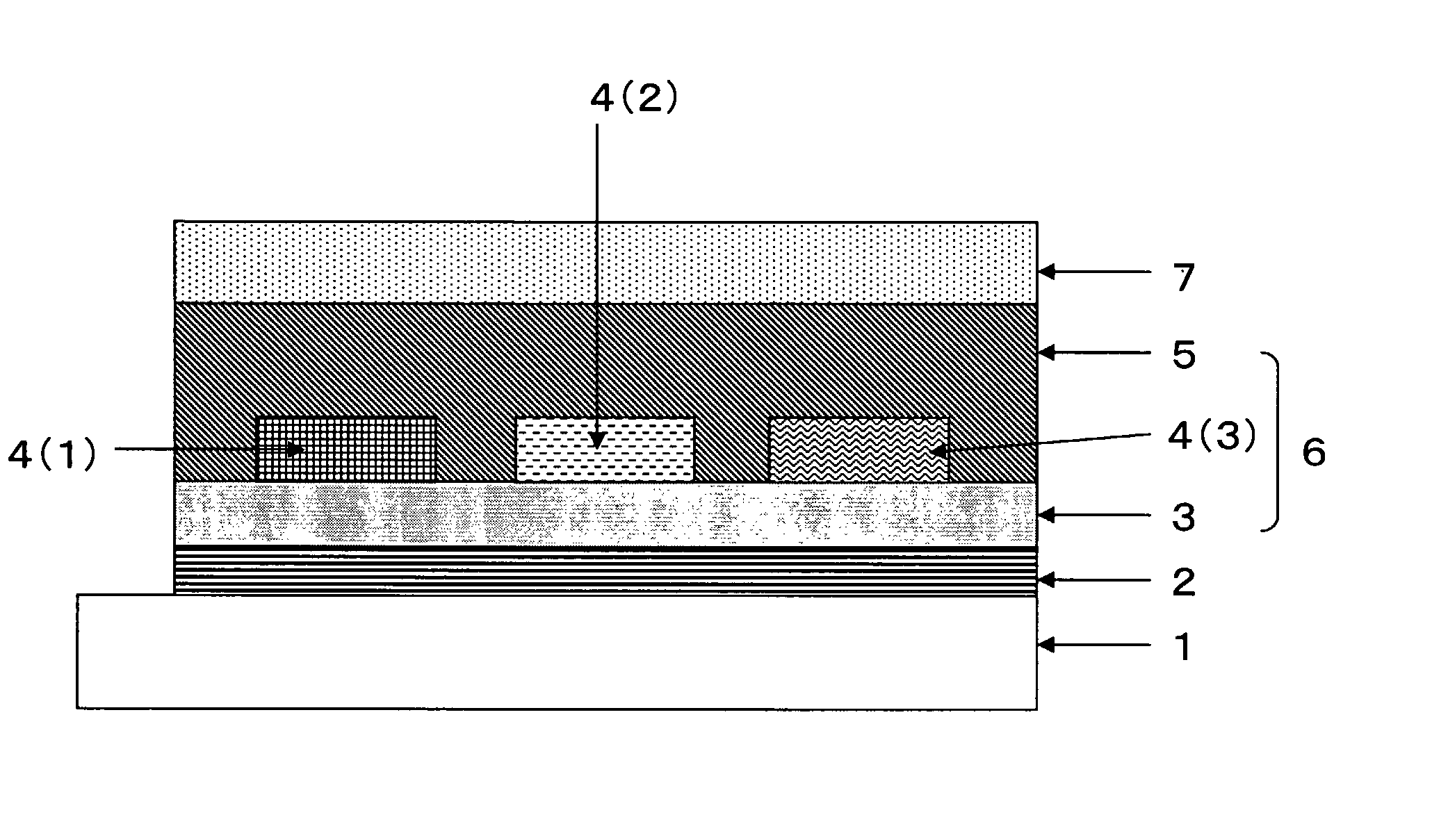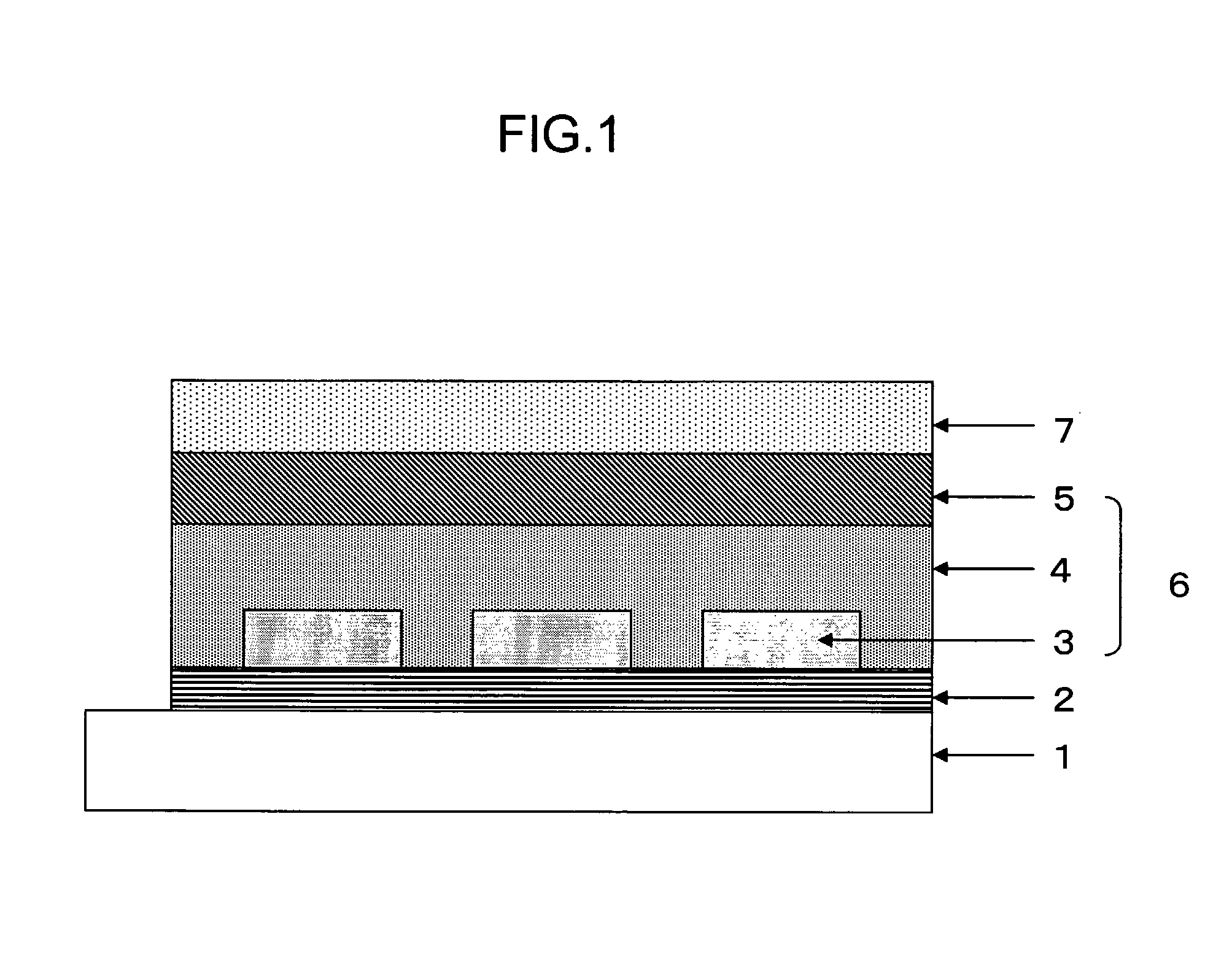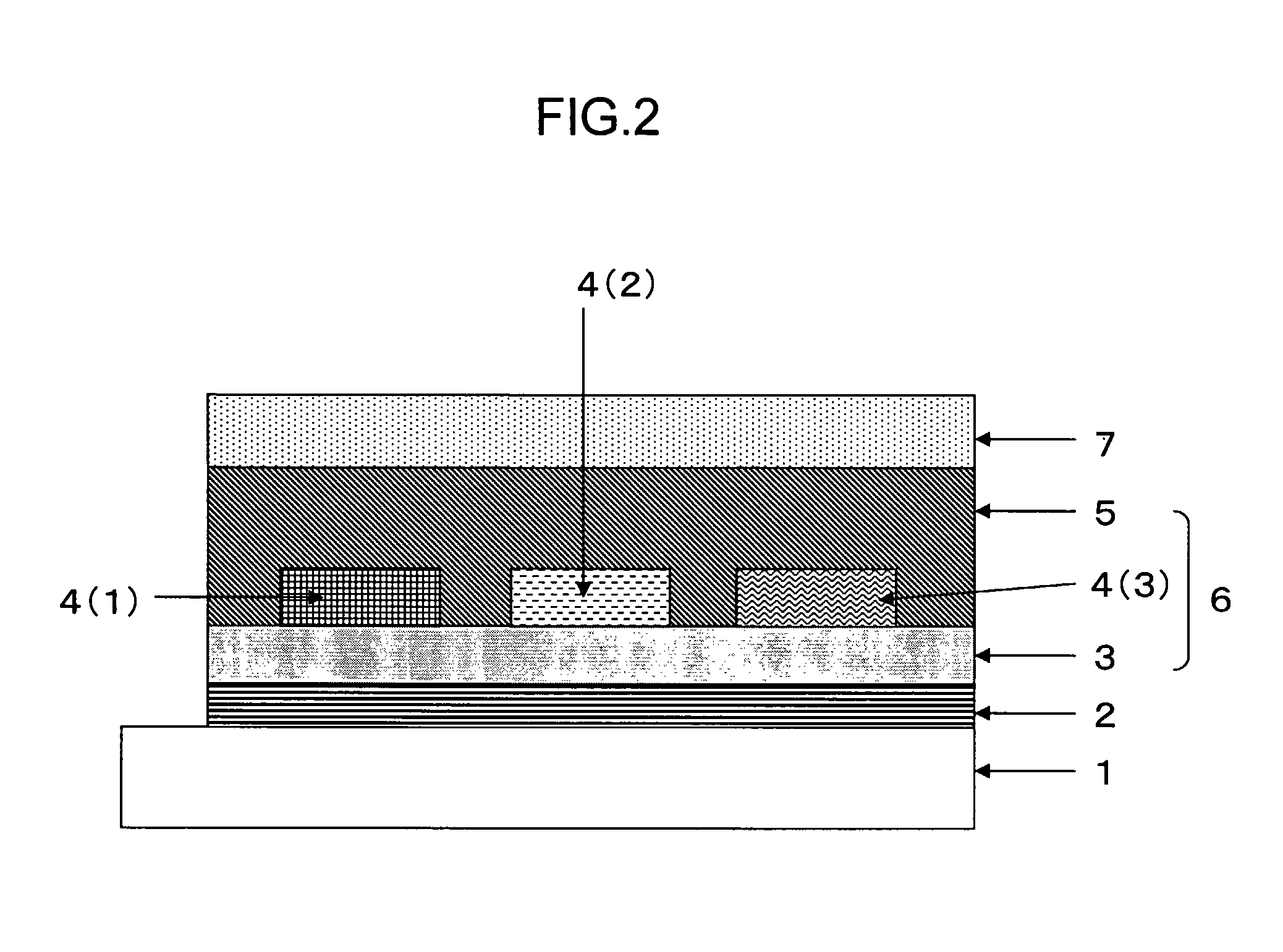Organic Electroluminescent Device and Method for Producing the Same
a technology of electroluminescent devices and organic materials, which is applied in the manufacture of electrode systems, electric discharge tubes/lamps, and luminescent screens for discharge tubes, etc., can solve the problems of inevitably eluted underlayer positive hole injecting transport layer, and adverse effects on light emission properties, etc., to achieve excellent device properties, simple and low cost production, and easy to leave a portion other than the edge
- Summary
- Abstract
- Description
- Claims
- Application Information
AI Technical Summary
Benefits of technology
Problems solved by technology
Method used
Image
Examples
example 1
Preparation of Coating Liquid for Positive Hole Injecting Transporting Layer and Light Emitting Layer
[0146] The third generation azomethine dendrimer (see the following formula) having carbazole groups at the ends, disclosed in “Kanagawa Academy of Science and Technology (KAST) Summary of Studies in 2001”, KAST, 2002, p 101-116, is dissolved into toluene (special grade), which is from KANTO CHEMICAL CO., INC., Tokyo, at 2% by weight, so that a coating liquid for the positive hole injecting transporting is obtained.
[0147] Similarly, a green fluorescent polymer material ADS 228 GE from ADS is dissolved into toluene (special grade), which is from KANTO CHEMICAL CO., INC., Tokyo, at 1.5% by weight, so that a coating liquid for the light emitting layer is obtained.
(Production of Organic Electroluminescence Device)
[0148] The following processes for producing the device area all conducted within a glove box under inert gas atmosphere.
[0149] A glass substrate on which an ITO thin fil...
PUM
| Property | Measurement | Unit |
|---|---|---|
| wave length | aaaaa | aaaaa |
| work function | aaaaa | aaaaa |
| thickness | aaaaa | aaaaa |
Abstract
Description
Claims
Application Information
 Login to View More
Login to View More - R&D
- Intellectual Property
- Life Sciences
- Materials
- Tech Scout
- Unparalleled Data Quality
- Higher Quality Content
- 60% Fewer Hallucinations
Browse by: Latest US Patents, China's latest patents, Technical Efficacy Thesaurus, Application Domain, Technology Topic, Popular Technical Reports.
© 2025 PatSnap. All rights reserved.Legal|Privacy policy|Modern Slavery Act Transparency Statement|Sitemap|About US| Contact US: help@patsnap.com



